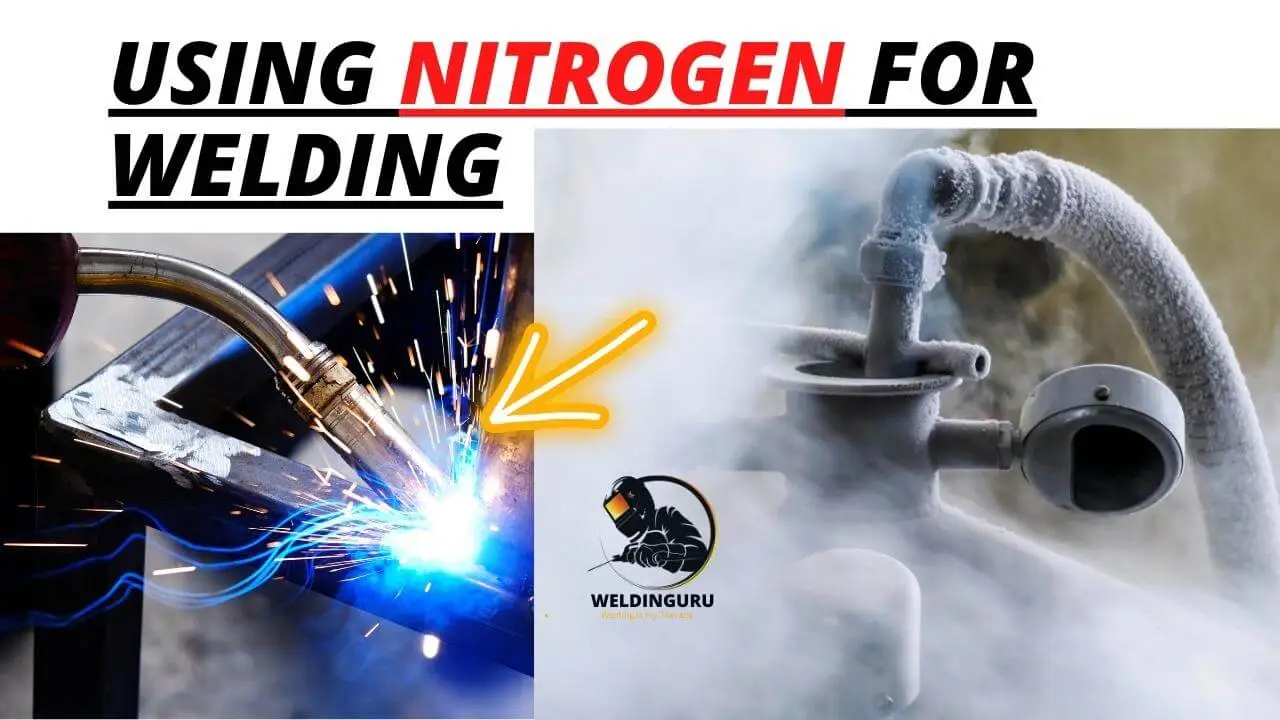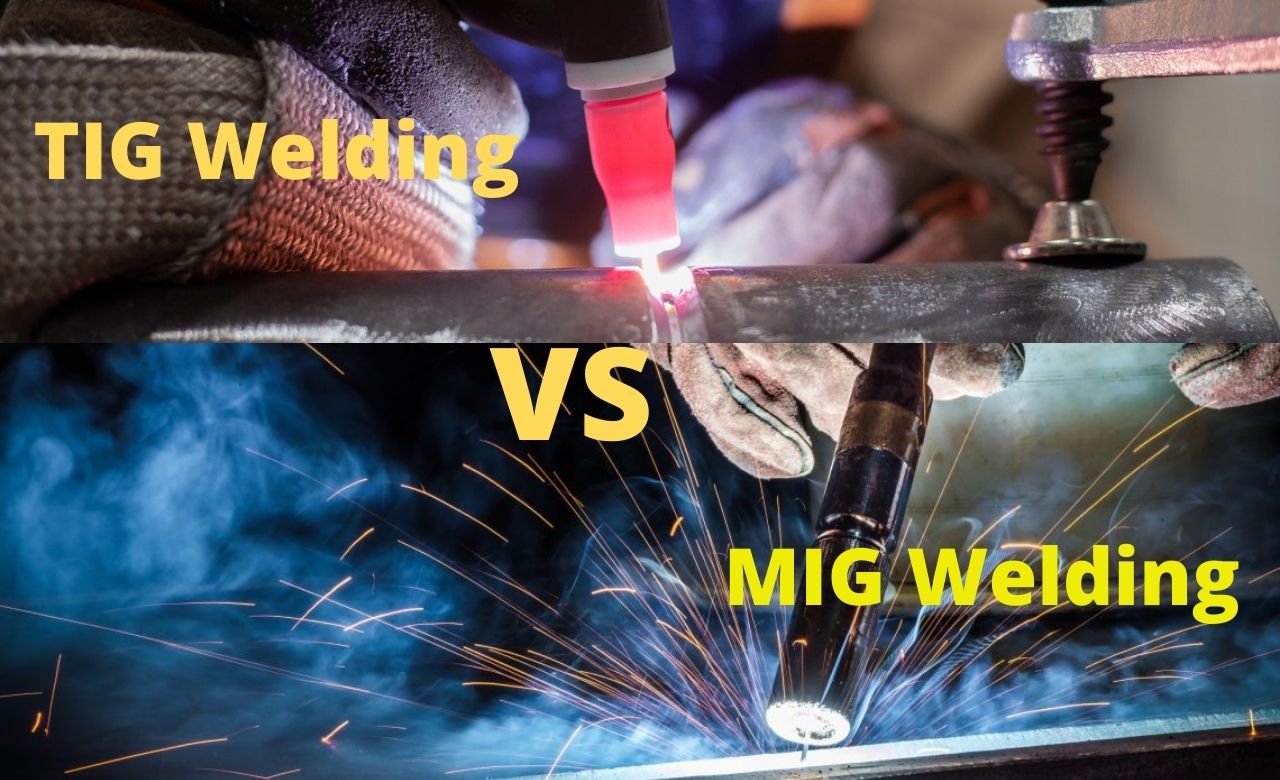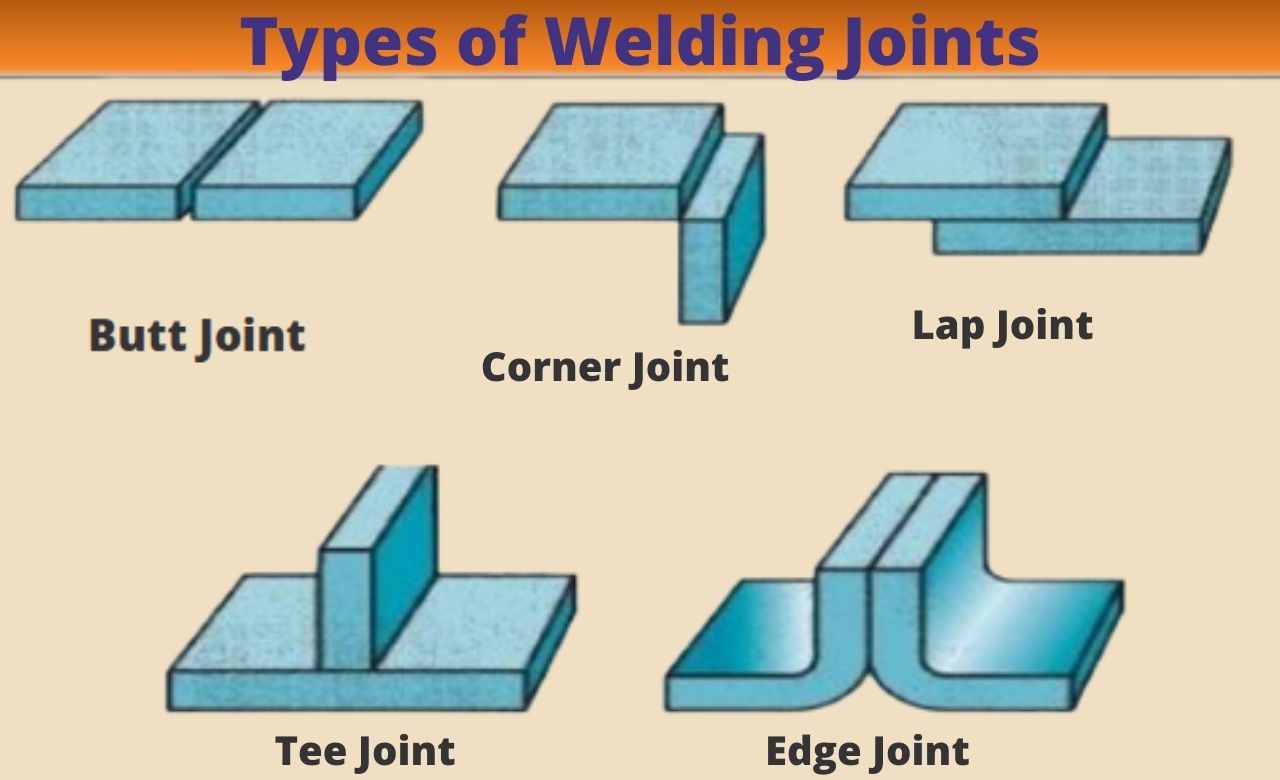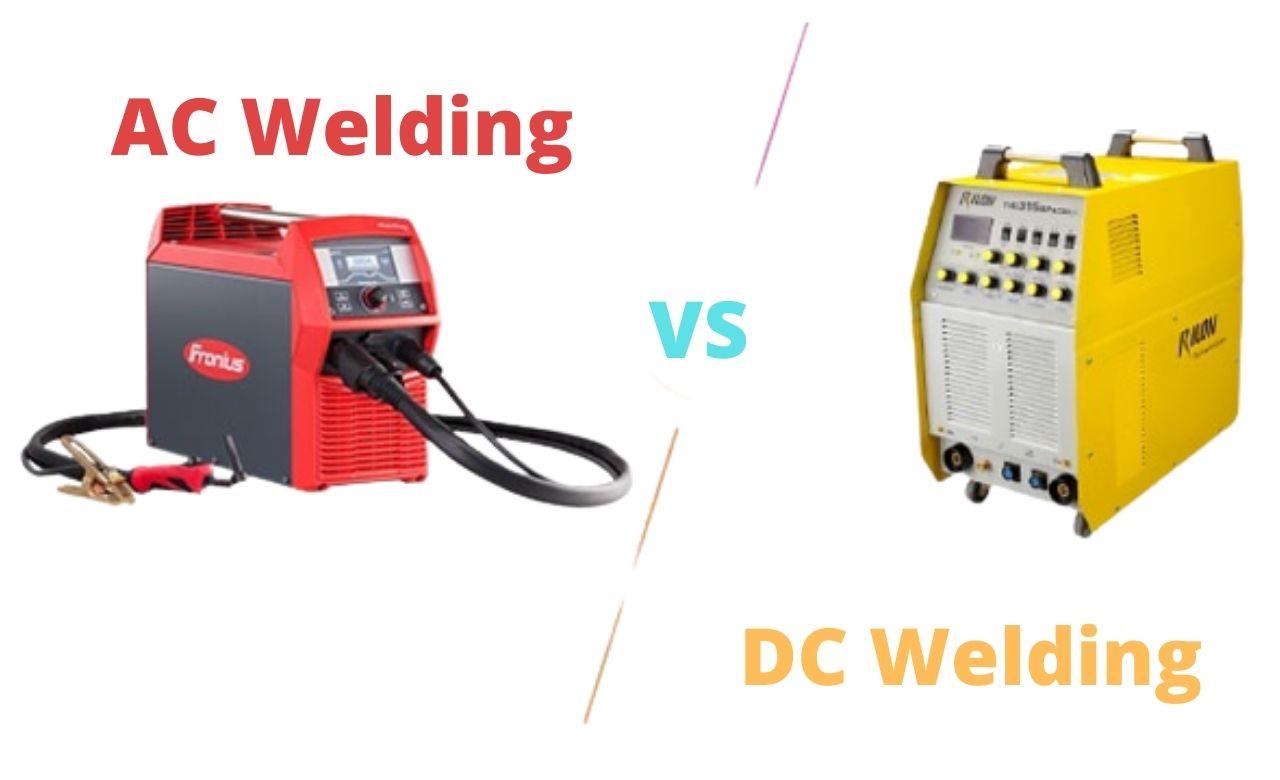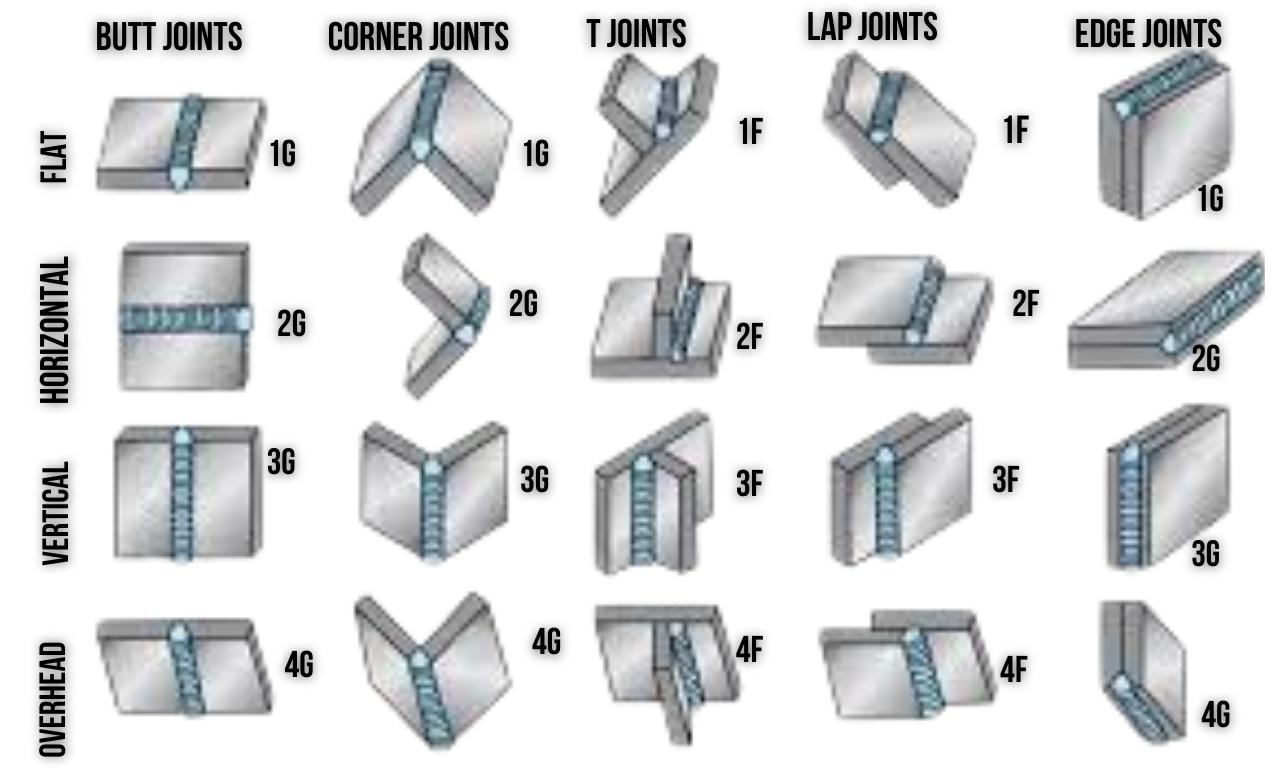If you are doing any kind of welding nowadays, then it is most likely that the welds you will be making will be joining pieces of steel together.
The use of steel has increased dramatically in recent years, and as a result, so has the need for processes that can join steel together.
Welding technology has advanced rapidly over the years, and one of the best ways to help keep up with this has been using nitrogen for welding over other forms of oxygen or argon, which were used previously.
In this article, I will discuss with you everything related to the use of nitrogen in different welding projects.
Using Nitrogen For Welding
Nitrogen is a popular gas for welders. It can be used to fill the space between the metal being welded and the rod that’s being used to fuse the metal together. This helps to protect the molten metal from oxidation, which creates a stronger bond than if it weren’t protected by nitrogen.
Nitrogen can be used in several ways during welding. The most common use of nitrogen during welding is as an inert gas shield for arc welding processes.
The purpose of this shield is to protect the molten metal from contamination by oxygen and other gases present in the atmosphere. It also helps to prevent oxidation of the base metal, which can cause porosity in welds.
Another way that nitrogen is used during welding is as an inert gas shield for inert-gas-shielded arc welding processes (IGSAWS).
This type of welding uses an electrode that contains oxygen and argon gasses, which are combined with helium when they enter the weld pool.
This combination creates a protective shield around the molten metal so that it does not oxidize or contaminate itself before solidifying into its final shape.
Purpose of Using Different Gas for Welding Projects
The purpose of using different gases for welding projects is to ensure that the best possible weld is achieved.
Different gases have different properties, and these properties can help you achieve the desired result. For example, argon and helium are used for welding because they are inert, which means that they do not react with other materials.
This allows them to be used on a wide range of materials and ensures that the weld is completed with minimal risk of contamination or damage caused by other gases.
Other gases have different purposes depending on their specific properties. For example, propane can be used as an alternative to argon or helium because it does not conduct electricity but does conduct heat, allowing for higher heat transfer rates than argon or helium would allow.
This can be useful in some situations where you want high heat transfer rates but don’t want all of your welds completed in one go (such as when welding thin material).
Can Nitrogen be Used for MIG Welding?
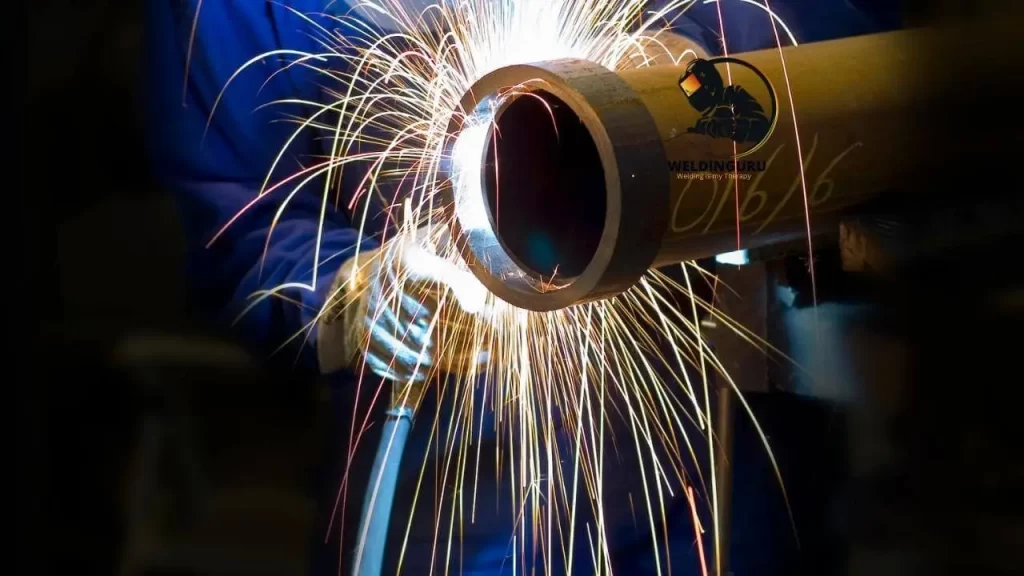
Yes, nitrogen can be used for MIG welding.
MIG welding is a process that creates an electric arc between a metal electrode and the metal being welded, which melts the two pieces together. The heat from this arc causes a liquid slag to form on the weld and protects it from oxidation.
Nitrogen is an inert gas that does not react with the weld or its environment, so it can be used to protect the weld from both oxidation and contamination during welding.
Nitrogen is often used as an alternative to argon because it is much less expensive and more readily available than argon.
If you’re working with sensitive materials like stainless steel or aluminum, then I recommend that you’ll want to use pure argon or pure helium instead of a mixture of gases like argon/nitrogen.
Advantages of Using Nitrogen for MIG Welding
If you’re looking for a way to improve the quality of your welds, then you should consider using nitrogen in your MIG welding process. Here are some of the advantages that come with it:
1. Better Penetration of Metal:
By adding nitrogen to your MIG welding process, you’ll find that you can better penetrate metal because it lowers the melting point and increases the arc length of your welds. This means that your weld will be stronger and more durable than usual.
2. Corrosion Resistant:
Another benefit is that nitrogen is extremely corrosion resistant, so it won’t corrode or rust over time like other types of gas.
This means that even after long periods of exposure to moisture or other elements, it won’t rust or deteriorate and become weak or brittle like other gases might do when exposed to extreme temperatures or humidity levels over long periods of time, which can cause cracks or breaks in the weld joint where they meet each other at right angles (90-degree angle).
3. Avoid Oxidation:
The main advantage of using nitrogen for MIG welding is that it reduces oxidation in the weld pool. The oxidation is a result of the metal being heated to high temperatures and exposed to oxygen. This can cause porosity, which means that there are holes in your welds, and they will not be as strong as they could be.
4. Reduces Spatter Issues:
Nitrogen also reduces spatter issues by preventing the arc from melting through the bottom of the weld bead. This helps you get a nice smooth finish on your welds without having any excess material hanging off of them and improves arc stability.
5. Increases Metal’s Tensile Strength:
Nitrogen also has a high thermal conductivity, which means that it helps to increase the metal’s tensile strength. When you are using nitrogen as your shielding gas, you will notice that your welds are stronger and more durable than they would be if you were using another kind of shielding gas.
Can Nitrogen be Used for TIG Welding?
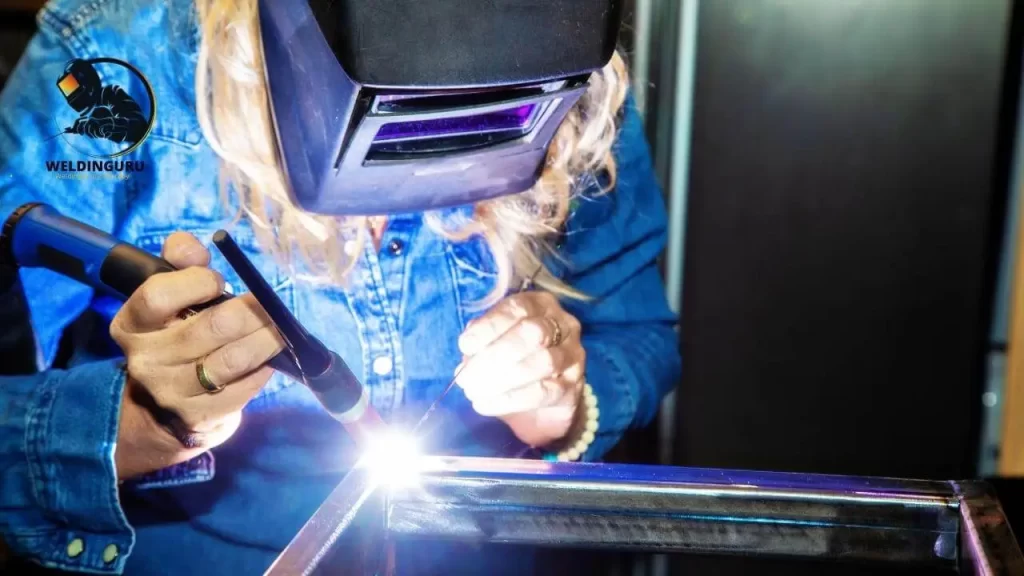
Yes, you can use nitrogen for TIG welding.
A TIG (tungsten-inert gas) welder uses a non-consumable tungsten electrode to heat the base metal, forming a weld. The process uses an inert gas as the shielding gas to protect the weld from contamination.
The most commonly used gas is argon, which is comprised of one atom of argon and three atoms of oxygen. Argon is very cheap, but it can leave porosity in the weld if it contains impurities or contaminants.
Nitrogen has many advantages over argon, including its purity and ability to prevent discoloration in stainless steel welds.
However, it does not provide as much shielding as argon does because it only has two atoms instead of three. This means that it will not protect your weld as well against oxygen contamination.
I recommend preferring full nitrogen for TIG welding only when you want to TIG weld duplex stainless steel.
Reasons to Use Nitrogen for Welding Duplex Stainless Steel
1. Cleaner Welds:
Nitrogen is a great option for welding duplex stainless steel because it gives you the ability to get a cleaner weld, lower the risk of porosity, and achieve better filler metal penetration.
When you use nitrogen for welding duplex stainless steel, you get cleaner welds. This is because nitrogen protects the molten metal from oxidation, which can lead to porosity in your weld.
2. Lower Risk of Porosity:
By using nitrogen with your TIG welding process, you’ll have a lower risk of porosity forming in your welds. Nitrogen helps to slow down the cooling rate of the molten metal at its surface so that it doesn’t cool too quickly and form gas bubbles within the weld itself.
3. More Filler Metal Penetration:
If your goal is to achieve as much filler metal penetration as possible, then nitrogen is an excellent choice for TIG welding duplex stainless steel because it will allow more filler metal to flow into cracks or pores within your base material before they become too large for filler metals to fill effectively.
4. Base Metal Temperature:
You’ll be able to work with a higher base metal temperature, which means that your finished product will have a lower coefficient of thermal expansion and lower thermal stress.
Nitrogen Gas Different Applications in MIG Welding
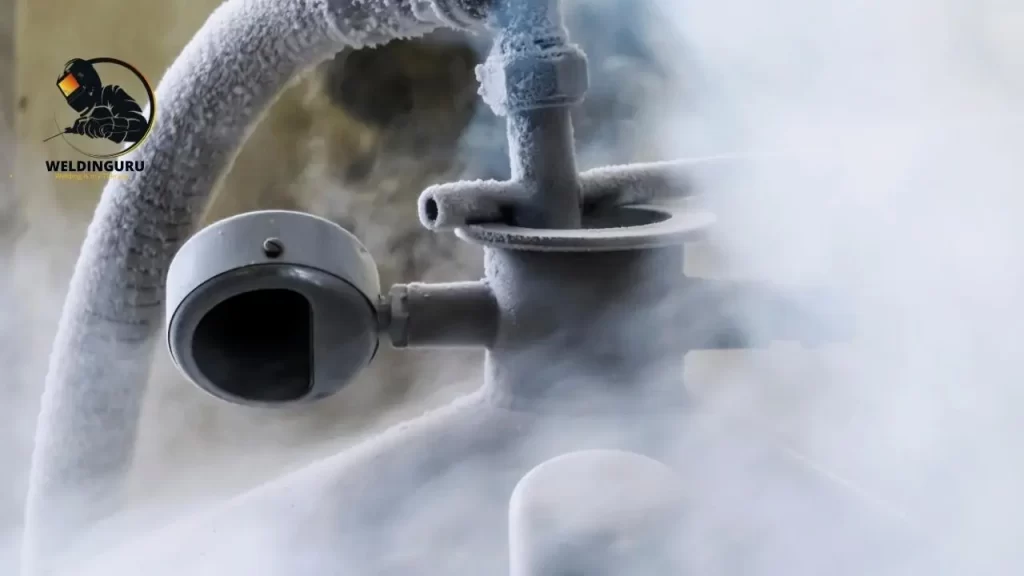
There are many different applications for Nitrogen gas in MIG welding. One of the most common is as a shielding gas.
Shielding Gas:
A shielding gas is used to protect parts from oxidation during the welding process and can also be used to prevent arc tracking. When you’re using a shielding gas, it should be introduced into the weld area just before or at the moment of striking an arc.
Purging Gas:
If you don’t have enough shielding gas in your tank, you can use a purge to introduce more Nitrogen into your work area. Purging is usually done just before striking an arc, and it can be done constantly while you’re welding as well (just make sure that it’s only done when you aren’t actually striking an arc).
Pre-heating Gas:
Another common use for Nitrogen gas is as a pre-heating gas. Preheating gases are used to heat up parts before they are welded together. They work by releasing heat into the metal and allowing it to flow over surfaces before any other heat source is introduced (such as through a plasma cutter).
Is there Any Issue with Using Nitrogen for Welding?
When it comes to the use of nitrogen in welding, you might be wondering: is there any issue with using nitrogen? The answer is no.
There are no issues at all. Nitrogen is a gas and has no effect on the welds that you make. It is, therefore, safe to use in any situation where you would otherwise use an inert gas.
Inert gases have been used for many years as a way of protecting welders from harmful fumes, but some people have become concerned about the negative effects of these gases on the environment.
For example, argon is released into the atmosphere when it’s burned off during welding processes. Nitrogen does not burn when it’s released from its container, which means that there are no harmful effects on the environment or humans alike.
Can Nitrogen be Used as Shielding Gas for Welding?
Yes, nitrogen can be used as shielding gas for welding.
The primary purpose of shielding gas is to protect the molten weld pool from contamination by atmospheric gases and reduce the oxidation of the molten metal.
Nitrogen is an inert gas that doesn’t react with other substances. It is considered safe for all types of welding processes, including arc welding and plasma arc cutting.
For example, when you’re working with stainless steel, you might use argon or helium as your shielding gas, but not nitrogen, because it’s more likely to cause embrittlement in the weld joint (leading to cracks) than argon or helium would.
Is it Possible to Weld Without any Gas?
It is possible to weld without any gas. But it’s not recommended.
Welding without gas means that you’re working without shielding gas in your welding process. Shielding gas is a mixture of argon and oxygen that forms a protective layer between the welder and the molten metal during welding.
This is necessary because when you’re welding, there is a lot of heat and energy being generated that could potentially cause harm to your skin and eyes if it weren’t for this shield.
Wrapping Up!
After experimenting with welding on your own, the results you get will probably vary slightly.
This is to be expected, but what we wanted to do with this article is give you a basic idea of what to expect when using nitrogen for welding.
Overall, I found that it was a simple process, and this article helps you better understand this increasingly popular technique.
FAQs:
Can you use nitrogen instead of argon for welding?
Although argon and nitrogen are both inert gases, they are used in different ways by welders. Argon is used to protect the arc and filler metal in a weld, while nitrogen protects flash from oxidation as it travels through the atmosphere. In some cases, it is possible to replace nitrogen with argon or vice versa, depending on what you’re welding and your needs.
Why is nitrogen preferably used in welding?
Nitrogen is used in welding because it reduces the risk of fire or explosions and is non-flammable. Nitrogen diffuses better than oxygen, which means less oxygen would be recommended for use when welding materials like carbon steel or stainless steel, which are more sensitive to oxidation.
Can you mix argon and nitrogen?
Yes, you can mix argon and nitrogen in whatever ratio you want. The main reason to do so is to allow for a lighter tank weight. I’ve seen people run as much as 80% argon in their setup because it allows them to use smaller tanks.
